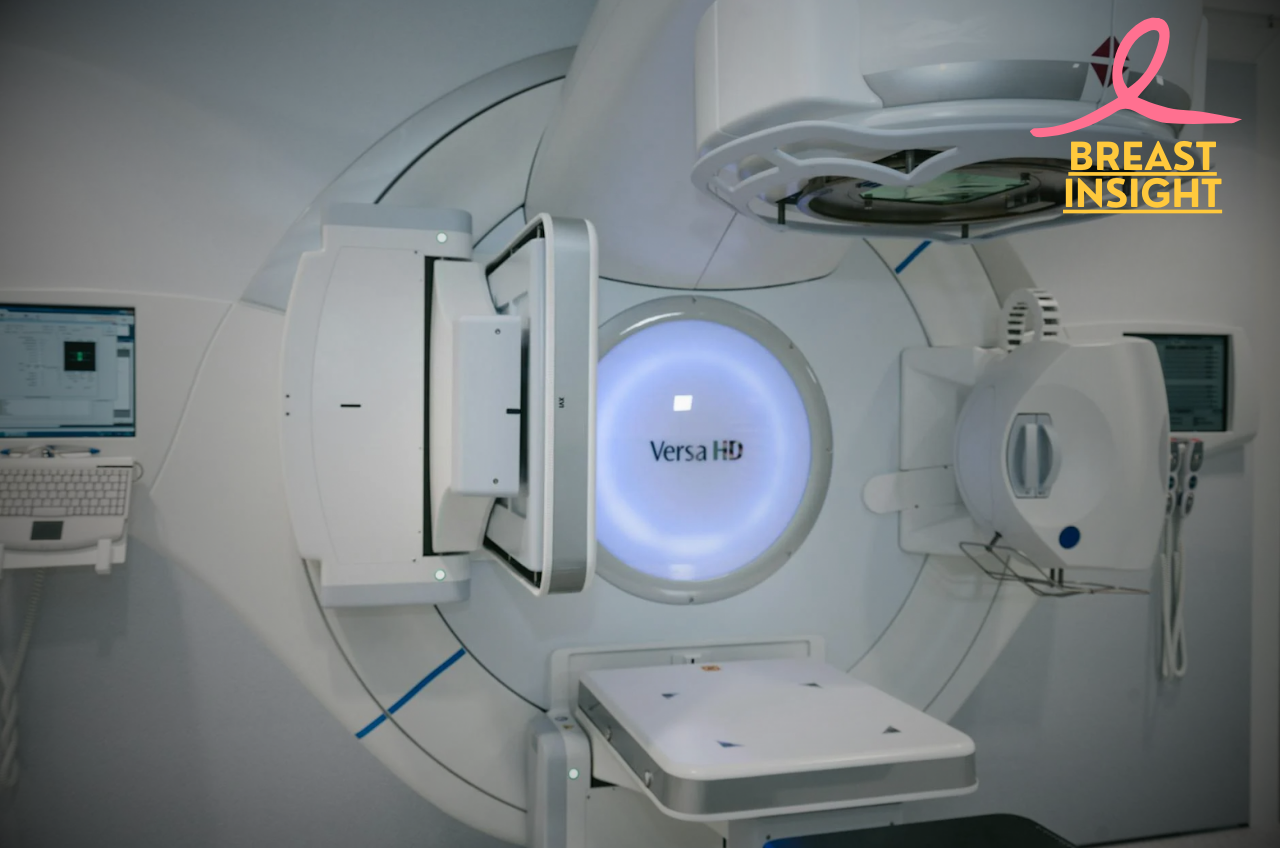Receiving a diagnosis of breast cancer can change your life literally overnight; this will be a moment that you will remember. There are many different treatments offered to patients who are unfortunately suffering from this illness; however, among all these treatments, radiation therapy is apparently a very important one in this fight against the powerful enemy – breast cancer. So what is the method and how does it actually work?
Most patients are afraid of everything related to the term radiation. You know that word better from some sci-fi movie or maybe from a nuclear power plant. Now, since you have this additional info about this intensive form of treatment, you can eliminate a good number of fears but may still consider an intelligent choice for your care. It is indeed true that, now a days, radiation therapy has progressed to so much greater hopes with far better outcome results for patients suffering from breast cancer.
If you’re just beginning to explore your options, understanding the basics of breast cancer, including its causes, symptoms, and treatments, can be helpful. Check out our guide on what Is Breast Cancer: Causes, Symptoms, and Treatment to build a solid foundation.
This article is going to give you a little orientation about radiation therapy in the treatment of breast cancer, beginning from the most basic to those that are latest introduced. Everything we’ve considered here can be taken away, starting from the benefits of this process to any possible side effects and how best to get ready for this particular treatment. If you are either a patient or caregiver, or maybe just curious to know everything, this shall give helpful insights into this integral part of breast cancer treatment.
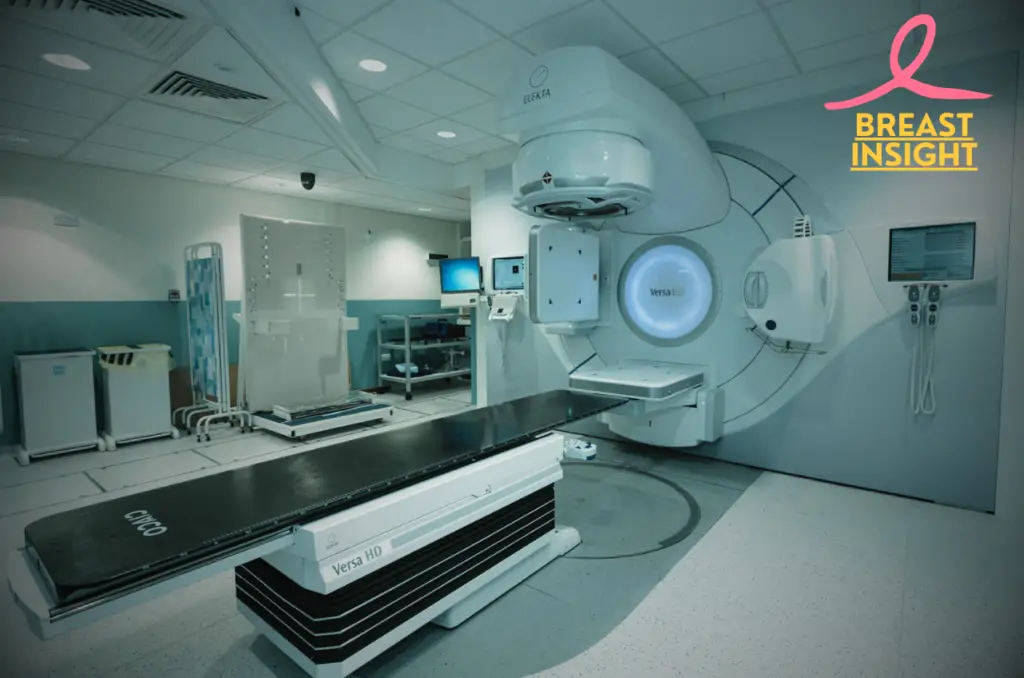
Understanding Radiation Therapy for Breast Cancer
What is radiation therapy?
Radiation therapy is an important part of breast cancer treatment that uses strong rays or particles to kill cancer cells. This method focuses on getting rid of leftover cancer cells after surgery or reducing tumors before surgery. If you’re exploring breast cancer care, knowing about early detection methods can make a difference. Learn more in our guide on 5 Breast Cancer Screenings for Early Detection.
Types of radiation therapy for breast cancer
There are two main types of radiation therapy used in breast cancer treatment:
- External Beam Radiation Therapy (EBRT)
- Internal Radiation Therapy (Brachytherapy)
| Type | Description | Duration |
| EBRT | Delivers radiation from outside the body | 3-6 weeks |
| Brachytherapy | Places radioactive sources directly in or near the tumor | 1-5 days |
When is radiation therapy recommended?
Radiation therapy is typically recommended in the following scenarios:
- After breast-conserving surgery (lumpectomy)
- Following mastectomy for high-risk patients
- To shrink tumors before surgery
- For metastatic breast cancer to alleviate symptoms
Goals of radiation treatment
The primary objectives of radiation therapy in breast cancer treatment include:
- Eliminating remaining cancer cells post-surgery
- Reducing the risk of cancer recurrence
- Shrinking tumors to facilitate surgical removal
- Alleviating pain and other symptoms in advanced cases
Radiation therapy targets cancer cells and tries to reduce harm to healthy tissue. This is important for making breast cancer outcomes better and improving the quality of life for patients.

The Radiation Therapy Process
A. Initial consultation and planning
The radiation therapy process starts with a detailed meeting with a radiation oncologist. During this important meeting, the doctor looks over your medical history, talks about treatment choices, and answers any questions you might have. The planning stage involves a careful examination and imaging tests to precisely locate the tumor.
If you’re anxious about earlier steps, such as a biopsy, understanding the process can help. Learn about 6 Things to Stay Calm During a Breast Biopsy to ease your concerns.
B. Simulation and treatment mapping
Following the initial session, there is a simulation session. This is where the tailored treatment plan is done. A radiation therapist uses present imaging methods such as CT scans or MRIs to pinpoint the specific area that should be treated. This allows for minimal exposure of healthy tissue to radiation while providing maximum radiation on cancerous cells.
| Simulation Step | Purpose |
| Positioning | Ensures consistent patient setup |
| Imaging | Creates detailed 3D maps of treatment area |
| Marking | Places temporary or permanent markers for precision |
C. Daily sessions
When a plan is completed, actual daily treatment sessions begin. Such sessions are typically of short duration, usually from 15 to 30 minutes, and the exposure typically only lasts for a few minutes. Patients lie quietly on a treatment table while the radiation beams are precisely distributed from a machine to the site targeted.
D. Duration of Treatment Course
The actual treatment course for breast cancer differs according to several reasons:
- Type of Breast Cancer
- Stage of disease
- Other treatments received
Generally, the course lasts between 3 to 7 weeks, with treatments given 5 days a week.
E. Follow-up care
After the completion of radiation therapy, there will be frequent follow-ups to keep track of one’s progress and the management of residual side effects. Such follow-ups can ascertain the efficacy of the treatment and attend to any possible complaint emerging thereafter.

Advantages of Radiation Therapy in Breast Cancer Treatments
Radiation therapy is one of the modalities in cancer therapy. It has many value additions in breast cancer treatment.
A. Reduced risk of recurrence
Radiation therapy reduces the occurrence of breast cancer recurrences as significantly within the irradiated area. Here is how:
- Targets tiny cancer cells: Radiation is very effective in eliminating any remaining cancer cells that could have escaped from surgery or chemotherapy.
- Long-term preservation: Studies reveal that the reoccurrence of cancer in the same location might be reduced by 50-60% for 10 years through radiation therapy.
- Personalized treatment: The radiation oncologists adjust the treatment according to each case, thus optimizing the outcome.
B. Preserving breast tissue in early cancer
Radiation therapy is the breast-conserving alternative for patients with early-stage breast cancer.
- Lumpectomy and mastectomy: Lumpectomy, coupled with radiotherapy, is equally efficient in managing early-stage breast cancer as mastectomy is.
- Aesthetic benefits: Preservation of body image and self-esteem by the conservation of the breast during radiation therapy.
- Fast recovery: Patients usually heal faster compared to other major surgeries.
C. Advanced breast cancer palliative end
For advanced breast cancer, radiation therapy offers helpful palliative benefits:
- Pain relief: Focused radiation can effectively reduce the pain associated with cancer spread, especially to bones.
- Better quality of life: Controlling of symptoms implies keeping patients in a good quality of life while they undergo the treatments.
- Flexibility: Radiation can be used to treat multiple issues in patient with stage IV breast cancer, such as spinal cord compression or brain metastases.
| Benefit | Early-Stage Cancer | Advanced Cancer |
| Primary Goal | Cure and prevention | Symptom management |
| Treatment Duration | Typically longer | Often shorter courses |
| Impact on Quality of Life | Preserves breast tissue | Alleviates pain and discomfort |
Considering all these advantages, radiation therapy has its importance in breast cancer treatment and gives hope with better results for patients in every stage of the disease. Now we will discuss possible side effects of radiation therapy and how to manage them effectively.
Discover 6 Insights into the Benefits and Limitations of Breast MRI to learn how this tool enhances precision in breast cancer diagnosis and management.
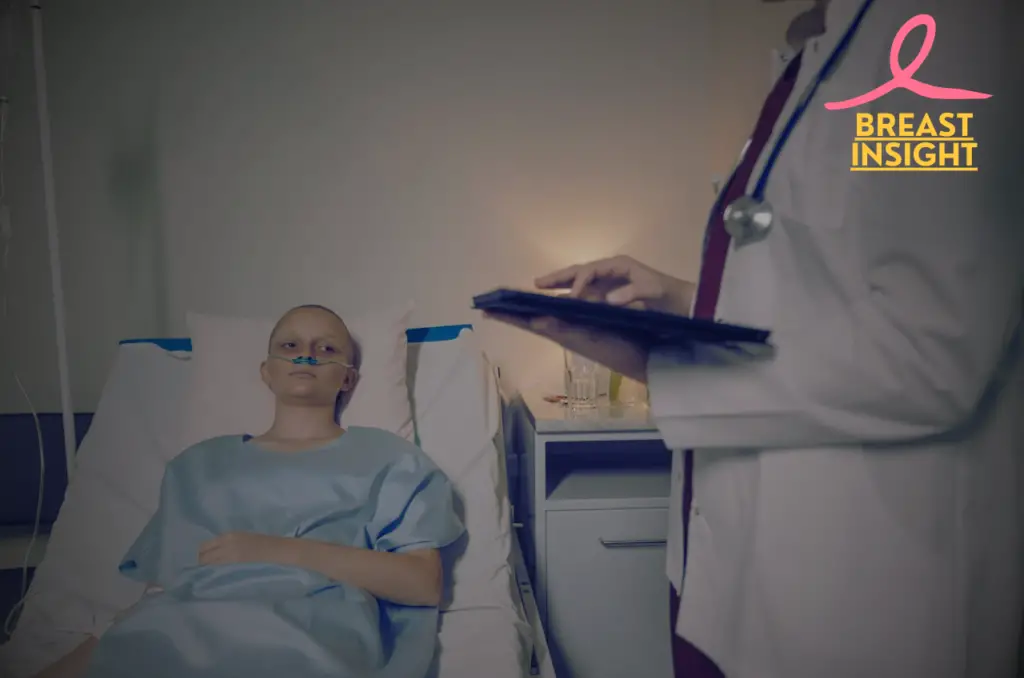
Potential Side Effect and Management
Short-term side effects
Radiation therapy for breast cancer may cause some short-term side effects:
- Skin irritation (redness, itching, and peeling)
- Fatigue
- Breast swelling or tenderness
- Trouble swallowing (if radiation affects the chest region)
Long-term side effects
While less common, some patients may experience long-term effects:
- Changes in how breasts look or feel
- Lymphedema (arm swelling)
- Lung or heart issues (rare with modern procedures)
Ways to handle side effects
| Side Effect | Management Strategy |
| Skin irritation | Use gentle, fragrance-free moisturizers; avoid tight clothing |
| Fatigue | Get adequate rest; maintain light exercise routine |
| Breast changes | Wear supportive bras; consider breast massage |
| Lymphedema | Practice arm exercises; use compression garments if recommended |
When to contact your healthcare team
Talk to your radiation doctor or nurse if you feel:
- Severe skin reactions (blistering and open wounds)
- Continuous fever
- Unusual aching or swelling
- Trouble breathing
Be sure to open up and talk about side effects you’re experiencing with your healthcare team. They can offer specific advice and even adjust your treatment if needed. Most side effects are temporary, and there’s plenty of care and help that can be administered.
Learn 5 Facts About Diagnostic Mammograms that Save Lives to understand how early intervention plays a crucial role in improving outcomes.
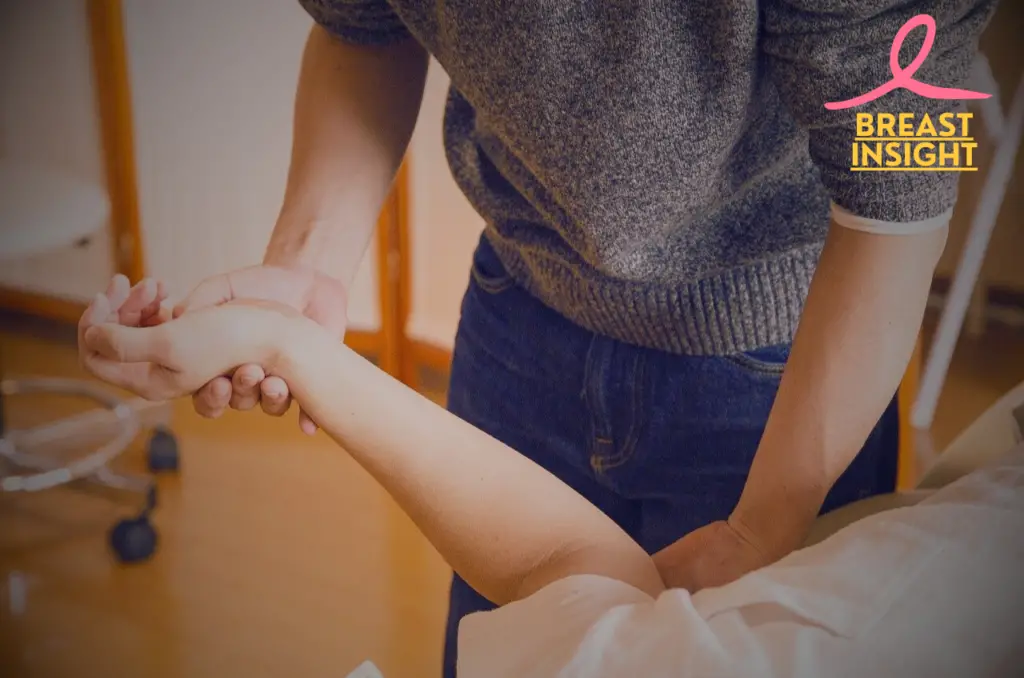
Improvements in Radiation Treatment Methods
Today, radiation therapy for breast cancer has significantly improved, thereby presenting the breast cancer patient with better options regarding treatment. Let’s analyze a few of the new techniques that have altered the landscape in which breast cancer radiation therapy occurs.
3D-conformal radiation therapy
Advanced imaging technologies are used to make a 3D model of the tumor and surrounding tissues. The desired aim is to focus on the cancer cells more precisely while harming the less desirable healthy cells the least.
Intensity-modulated radiation therapy (IMRT)
IMRT makes radiation treatment more accurate by changing how strong the radiation beams are while treating. This method allows doctors to give stronger doses to the tumor while lowering the exposure to healthy tissues nearby.
Image-guided radiation therapy (IGRT)
IGRT uses imaging methods with radiation delivery, which helps track tumors in real-time and make changes to treatment. This ensures that radiation is given exactly to the target area, even if the tumor moves a little during treatment.
Proton therapy
Proton therapy is a new method that uses protons instead of regular X-rays. This method provides better dose distribution, which may lower side effects and enhance treatment results.
| Technique | Key Advantage |
| 3D-conformal | Precise targeting |
| IMRT | Intensity modulation |
| IGRT | Real-time tracking |
| Proton therapy | Superior dose distribution |
These new approaches to radiation therapy have been quite beneficial with the disease breast cancer, thus offering:
- More precise
- Fewer side effects
- Better treatment outcomes
- Better quality of life for patients
As we continue to make advancements in radiation oncology, patients can look forward to more effective and personalized choices in treatment in the near future. In addition to these innovative treatment methods, early diagnosis plays a critical role in successful outcomes. Learn more about the advancements in breast ultrasound, a powerful diagnostic tool that supports treatment planning, in our article on Breast Ultrasound: From Facts to Breakthroughs.
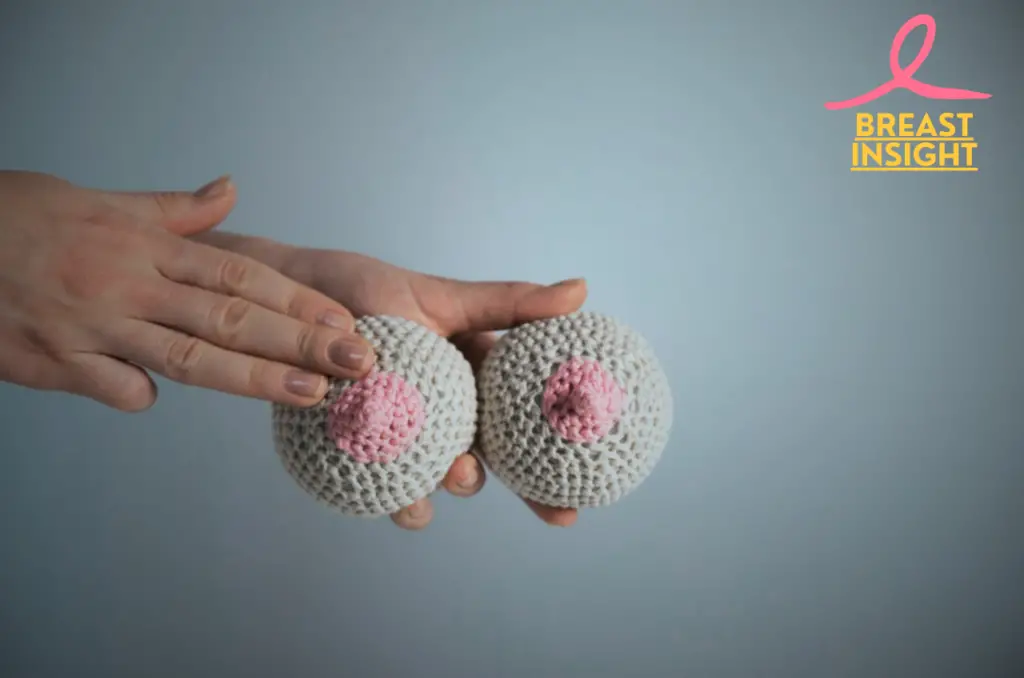
Radiation Therapy Used with Other Treatments
Radiation therapy is highly used in conjunction with other treatments in giving adequate care to breast cancer patients. Let’s see how radiation works with other treatment options.
Surgery and Radiation
It usually accompanies surgery in treatment of breast cancer. Here’s how they complement each other:
- Breast-conserving surgery: Radiation is often employed after a lumpectomy to destroy any residual cancer cells
- Mastectomy: Post mastectomy irradiation is advisable for selected high-risk cases
| Timing | Purpose |
| Before surgery | Shrink tumor size |
| After surgery | Eliminate remaining cancer cells |
Radiation and Chemotherapy
It could very well work with a combination of both chemotherapy and radiotherapy known as Chemo radiation
- Sequential therapy: Chemotherapy followed either by radiation or vice versa
- Concurrent treatment: Both therapies administered simultaneously for enhanced efficacy
Radiation and Targeted Treatments
Targeted therapies, for example HER2-targeted drugs may be combined with radiation
- May make cancer cells more sensitive to radiation
- Would possibly make treatment results better
Radiation and Hormone Therapy
In the case of hormone receptor-positive breast carcinomas, radiation could be added to hormone therapy.
- Hormone treatment may be initiated concurrently with or after radiation therapy
- Long-term hormonal therapy reduces the recurrence risk
With such treatments combined with radiation therapy, doctors in specialized cancer clinics can provide a personalized and complete treatment plan that will satisfy the needs of each patient with breast cancer.
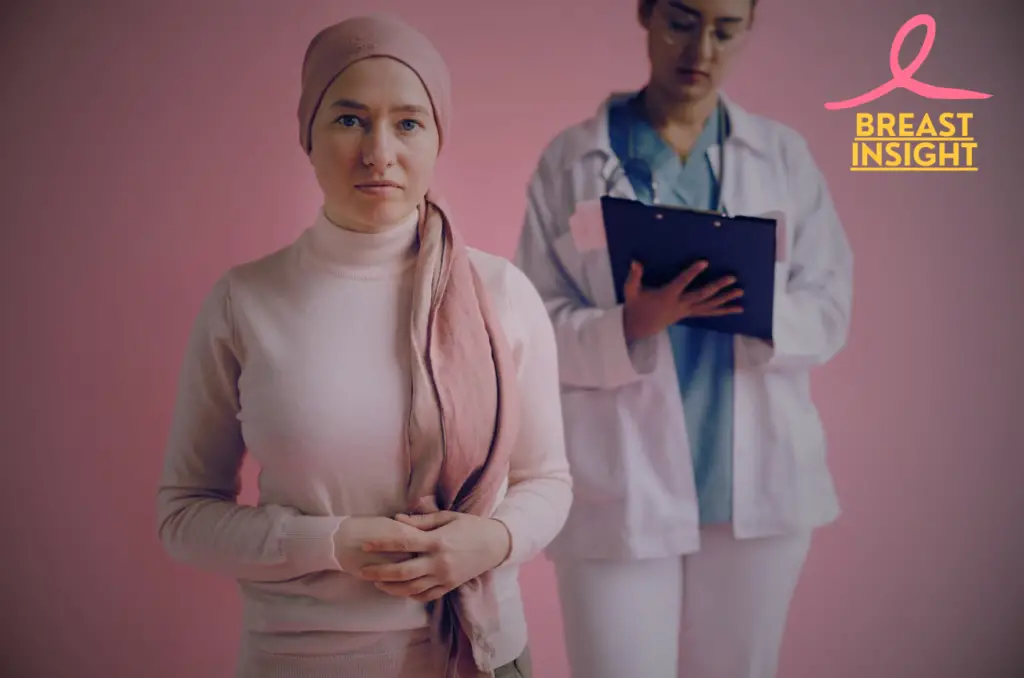
Preparation for Radiation Therapy
Questions to Ask Your Radiation Doctor
Before starting radiation therapy, it’s crucial to have a comprehensive understanding of your treatment. Here are some essential questions to ask your radiation oncologist:
- What type of radiations do I receive?
- How long does the treatment normally take?
- What could be the possible side effects for me?
- How will the treatment change my everyday life?
Lifestyle Changes during Treatment
Changing some habits can help you handle the treatment process better:
- Skin care: Apply fragrance-free, gentle creams around the treated area
- Diet: Focus on nutrient-rich foods to support healing
- Rest: Make time for more sleep and relaxation.
- Exercise: Keep doing light physical activity that your doctor says is okay
Building a Support Network
Having a good support system is very important during radiation therapy. Think about this:
| Support Type | Benefits |
| Family and friends | Emotional support, practical help |
| Support groups | Shared experiences, coping strategies |
| Mental health professionals | Stress management, emotional processing |
| Oncology social workers | Resource navigation, financial advice |
Remember that preparation for radiation therapy comes in both practical and emotional aspects. You will prepare for your treatment confidently and strongly by asking the right questions, making necessary lifestyle adjustments, and building an adequate support system. Your health care team is there to assist you at every step; thus, do not hesitate to ask them questions or express your worries.

Conclusion
Radiation therapy is quite important in the comprehensive treatment of breast cancer. It enables patients to get better results and a good life. This post has discussed the basic and advanced methods of radiation therapy for breast cancer care. By focusing on cancer cells carefully, this treatment not only lowers the chance of cancer coming back but also helps save the breast in many cases.
With medical technology, radiation therapy keeps improving. As a result, there are more customized treatments, fewer side effects, and less time devoted to this therapy. Though it is an essential tool, the fact that radiation will be employed in combination with other methods does not in any way eliminate it from its position of prominence in battling breast cancer. Whether you or a loved one is facing breast cancer treatment, make sure to discuss the possibility of needing radiation therapy with your healthcare team and plan for this potentially life-saving treatment.
Frequently Asked Questions (FAQs)
What is radiation therapy, and how does it work?
1. Radiation use high-energy rays to destroy the specific cells diagnosed with cancer.
2. It damages the DNA of cancer cells, preventing them from growing or dividing.
3. Healthy cells are affected, but usually can recover much better than cancer cells.
What are the common side effects of radiation therapy for breast cancer?
1. Skinchanges such as redness, dryness, or peeling in the treated area.
2. Fatigue may be increased as treatment continues.
3. Soreness or swelling of the breast or chest
4. Long-term effects may manifest as subtle alterations in breast size or texture.
How long does a typical course of radiation therapy last?
1. Standard radiation treatment takes 3-6 weeks, given 5 days a week.
2. For example, hypofractionated radiation might require only 1-3 weeks of treatment courses.
3. The precise length of time hinges on the treatment plan your doctor advises.
Can radiation therapy be combined with other breast cancer treatments?
1. Yes, it is commonly combined with surgery (before or after) to reduce recurrence risk.
2. In some instances, it may also be used in conjunction with chemotherapy or hormonal therapy.
3. The sequence and combination depend on the cancer stage and individual treatment goals.

